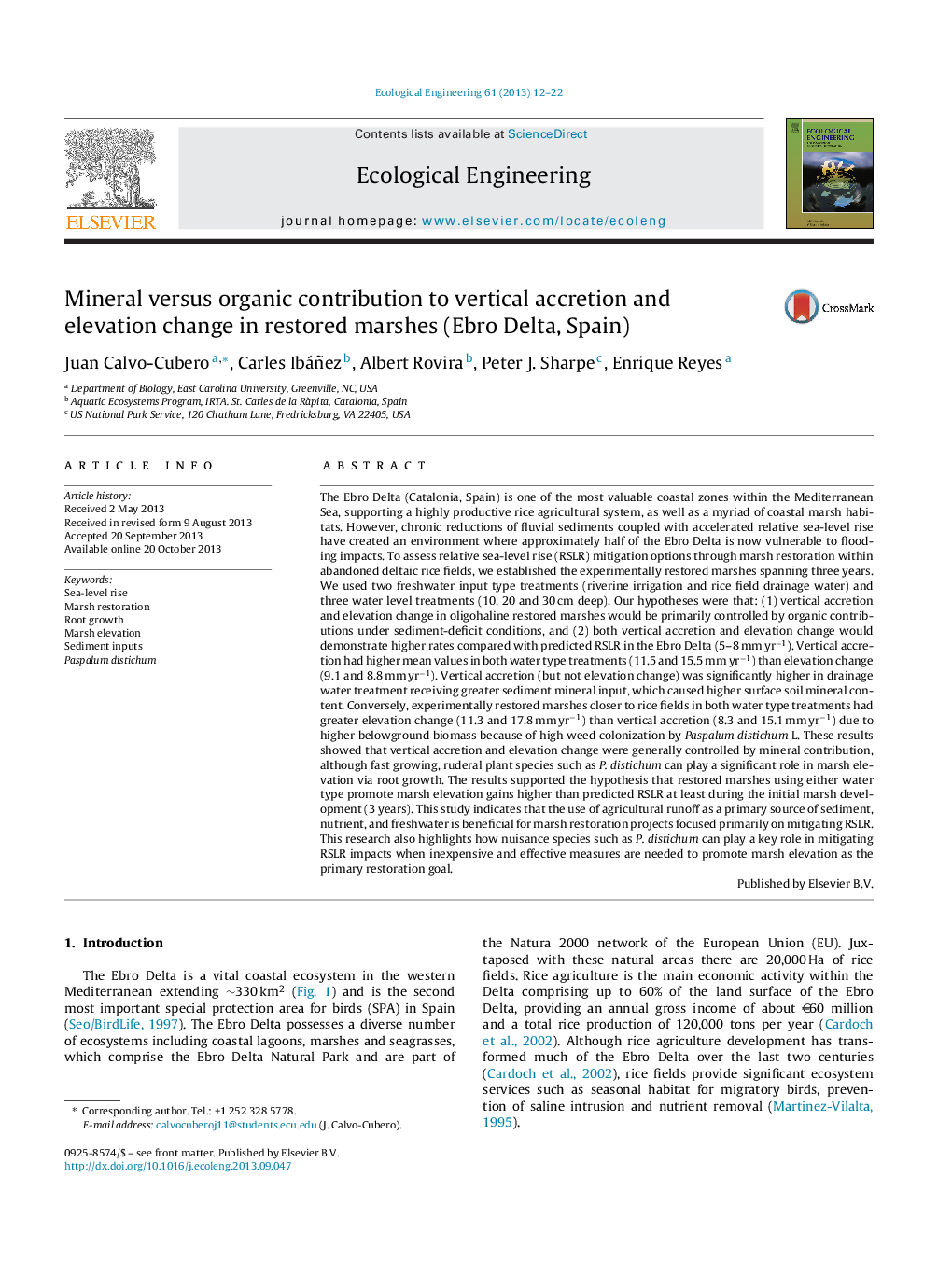| Article ID | Journal | Published Year | Pages | File Type |
|---|---|---|---|---|
| 4389457 | Ecological Engineering | 2013 | 11 Pages |
Abstract
The Ebro Delta (Catalonia, Spain) is one of the most valuable coastal zones within the Mediterranean Sea, supporting a highly productive rice agricultural system, as well as a myriad of coastal marsh habitats. However, chronic reductions of fluvial sediments coupled with accelerated relative sea-level rise have created an environment where approximately half of the Ebro Delta is now vulnerable to flooding impacts. To assess relative sea-level rise (RSLR) mitigation options through marsh restoration within abandoned deltaic rice fields, we established the experimentally restored marshes spanning three years. We used two freshwater input type treatments (riverine irrigation and rice field drainage water) and three water level treatments (10, 20 and 30 cm deep). Our hypotheses were that: (1) vertical accretion and elevation change in oligohaline restored marshes would be primarily controlled by organic contributions under sediment-deficit conditions, and (2) both vertical accretion and elevation change would demonstrate higher rates compared with predicted RSLR in the Ebro Delta (5-8 mm yrâ1). Vertical accretion had higher mean values in both water type treatments (11.5 and 15.5 mm yrâ1) than elevation change (9.1 and 8.8 mm yrâ1). Vertical accretion (but not elevation change) was significantly higher in drainage water treatment receiving greater sediment mineral input, which caused higher surface soil mineral content. Conversely, experimentally restored marshes closer to rice fields in both water type treatments had greater elevation change (11.3 and 17.8 mm yrâ1) than vertical accretion (8.3 and 15.1 mm yrâ1) due to higher belowground biomass because of high weed colonization by Paspalum distichum L. These results showed that vertical accretion and elevation change were generally controlled by mineral contribution, although fast growing, ruderal plant species such as P. distichum can play a significant role in marsh elevation via root growth. The results supported the hypothesis that restored marshes using either water type promote marsh elevation gains higher than predicted RSLR at least during the initial marsh development (3 years). This study indicates that the use of agricultural runoff as a primary source of sediment, nutrient, and freshwater is beneficial for marsh restoration projects focused primarily on mitigating RSLR. This research also highlights how nuisance species such as P. distichum can play a key role in mitigating RSLR impacts when inexpensive and effective measures are needed to promote marsh elevation as the primary restoration goal.
Related Topics
Life Sciences
Agricultural and Biological Sciences
Ecology, Evolution, Behavior and Systematics
Authors
Juan Calvo-Cubero, Carles Ibáñez, Albert Rovira, Peter J. Sharpe, Enrique Reyes,
